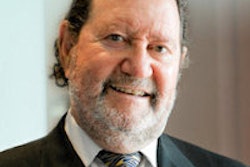
For the majority of patients, scaling and root planing (SRP) is the gold standard for nonsurgical periodontal therapy. But for those patients with diabetes or compromised health, adjunctive therapies, such as diode lasers, may have a role in treatment.
The use of lasers is somewhat controversial, however, according to a recent literature review in the Journal of Dental Hygiene. As the authors noted, of the few studies done that included diode lasers, the outcomes are "varied and often conflicting" (April 2014, Vol. 88:2, pp. 78-86).
Lead study author Mary Porteous, RDH, MS, told DrBicuspid.com that practitioners using diode lasers report clinical success but that study design issues prevent a definite statement.
"The results of clinical studies show a trend in clinical improvement for at least one clinical outcome measure in 80% of the studies cited in my manuscript," she said. "However, the diversity in both the clinical outcome measures studied, as well as study design, prevents a statement of clinical efficacy for the adjunctive use of the diode laser in nonsurgical periodontal therapy."
“The results of clinical studies show a trend in clinical improvement for at least one clinical outcome measure in 80% of the studies cited.”
Porteous is a dental hygienist in private practice in Danville, CA; a member of the Academy of Laser Dentistry's Laser Information Network; and an annual guest speaker on research software for the Master of Science in Dental Hygiene students at the University of California, San Francisco (UCSF) School of Dentistry.
The primary etiology of chronic periodontitis is the bacterial composition of the microbial biofilm, the authors wrote. While Porphyromonas gingivalis and Tannerella forsythia are the strongest bacterial markers for periodontal disease, the additional presence of Treponema denticola creates the "consortium" of periodontal pathogens associated with disease progression. P. gingivalis, despite being present in only small numbers, has been shown to dramatically alter the composition of oral microbiota, they stated.
Biofilm invades the cementum and epithelial lining of diseased pockets, the authors noted. So to remove periodontal disease, disrupt the biofilm. Removal of P. gingivalis from the mouth reverses aberrant inflammation, they stated.
Previous studies and clinical practice have established that an 810-nm diode laser can destroy P. gingivalis in vitro. Previous studies have also shown that use of a 980-nm diode laser plus SRP have been shown to reduce P. gingivalis and T. denticola levels, as well as the total bacteria load, for six months postbaseline in patients with aggressive periodontitis.
Reasons for the controversy
Few clinical trials on high-intensity diode lasers have been published, however. The authors cited the heterogeneity of methodology among these studies, which makes comparisons and conclusions difficult at times and contributes to the controversy over their use.
They noted, for instance, that studies have varied in laser power density settings (350 mW/cm2 to 2,830 W/cm2), exposure time (3 seconds to 90 seconds), frequency of laser treatments (one to six times), and clinical assessment parameters (plaque index to clinical crown length).
Porteous said some of the reasons for this controversy include the following:
- Tissue response to laser therapy was shown to be dependent on tissue type and health.
- The successful therapeutic treatment window was shown to be specific to the target tissue, biofilm composition, laser wavelength, and energy delivered.
- Studies have varied as to the number of times the laser was used during the course of periodontal therapy, the laser wavelength, the laser power delivered, the lasing exposure time, the study design (full mouth, split mouth, quadrant, or multisites), and the clinical and microbial assessments.
What researchers and practitioners don't know is if they can always obtain these same benefits clinically, Porteous noted.
"Tissue response is dependent not only on the energy from the laser received, but also on the overall health and type of target cells," she said. "Delivering laser energy within the therapeutic treatment window remains the challenging and sometimes elusive treatment goal."
However, using diode lasers has significant clinical advantages, Porteous noted.
"What we know from laboratory tests are three things," she said.
- Diode lasers can ablate P. gingivalis, a keystone pathogen in periodontal disease, and also many other bacteria.
- Diode lasesr can vaporize the inflamed, highly vascular tissue within a periodontally involved pocket.
- Diode lasers can promote healing.
Further studies needed
Porteous hopes dental professionals will take away two messages about the need for further studies.
- Larger, well-designed clinical trials are needed to determine the efficacy of the diode laser for adjunctive use in periodontal therapy.
- Standardized protocols for laser use to deliver energy within the therapeutic treatment window to achieve the desired clinical outcome need to be developed.



















